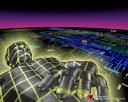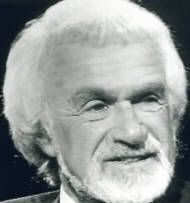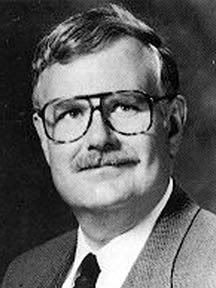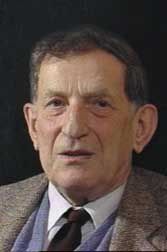ABELL 2218
Since I was a child I have had an extraordinary interest in space and time. Spacetime. Our telescopes allow us to look back in time. The more distant the object we see, the further back in time we see it. On a smaller scale you can do this right now. Anything you look at- a tree on the horizon, the Moon, even yourself in a mirror is really a past version. You are seeing the object of your current vision as it was at the time the light left it. The determining factor is the amount of time it takes for light reflecting from that object to reach your retina. In most cases, it is unnoticeable to you. In all cases, it is not really considered. Light from the Sun in the sky takes 8 minutes to "reach" us here on Earth, hence the Sun is said to be 8 light minutes away. If it were to go supernova, we wouldn't know it for 8 minutes. Of course, the knowledge at that point wouldn't do us any good because we'd be dead.
Although none of us living on this tiny little insignificant "speck of dust" can comprehend the vastness of space, it certainly fascinates us. It is our true larger environment and it has been in existence for over 15 BILLION years and will exist BILLIONS of years after our species has succumbed to a natural or self-made disaster. We have only existed for an instant and will be gone "in the blink of an eye". To us, the Universe is eternal.

Credit: W. Couch (University of New South Wales), R. Ellis (Cambridge University), NASA
Explanation: Gravity can bend light. Almost all of the bright objects in this Hubble Space Telescope image are galaxies in the cluster known as Abell 2218. The cluster is so massive and so compact that its gravity bends and focuses the light from galaxies that lie behind it. As a result, multiple images of these background galaxies are distorted into faint stretched out arcs - a simple lensing effect analogous to viewing distant street lamps through a glass of wine. The Abell 2218 cluster itself is about 3 billion light-years away in the northern constellation Draco.
Courtesy NASA, January 11, 1998 Hubble photograph)
MUCH MORE AT DISCOVER THE COSMOS!
Although none of us living on this tiny little insignificant "speck of dust" can comprehend the vastness of space, it certainly fascinates us. It is our true larger environment and it has been in existence for over 15 BILLION years and will exist BILLIONS of years after our species has succumbed to a natural or self-made disaster. We have only existed for an instant and will be gone "in the blink of an eye". To us, the Universe is eternal.
Abell 2218: A Galaxy Cluster Lens

Credit: W. Couch (University of New South Wales), R. Ellis (Cambridge University), NASA
Explanation: Gravity can bend light. Almost all of the bright objects in this Hubble Space Telescope image are galaxies in the cluster known as Abell 2218. The cluster is so massive and so compact that its gravity bends and focuses the light from galaxies that lie behind it. As a result, multiple images of these background galaxies are distorted into faint stretched out arcs - a simple lensing effect analogous to viewing distant street lamps through a glass of wine. The Abell 2218 cluster itself is about 3 billion light-years away in the northern constellation Draco.
Courtesy NASA, January 11, 1998 Hubble photograph)
MUCH MORE AT DISCOVER THE COSMOS!

















<< Home